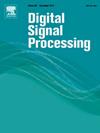Comprehensive review of segment anything model across multiple domains
IF 2.9
3区 工程技术
Q2 ENGINEERING, ELECTRICAL & ELECTRONIC
引用次数: 0
Abstract
The Segment Anything Model (SAM) has demonstrated exceptional zero-shot and few-shot generalization capabilities, enabling its effective transfer to novel image processing tasks and supporting diverse downstream applications. As a foundational component in large-scale systems or when integrated with complementary techniques for co-optimization, SAM has significantly advanced the development of image segmentation across multiple domains. However, inherent complexities within domain-specific datasets present critical challenges in boundary refinement, real-time processing, and computational efficiency. This review systematically summarizes current SAM applications in diverse scenarios, evaluates its strengths and limitations, and identifies recurrent challenges in representative datasets. Key optimization strategies for enhancing SAM's performance, generalizability, and efficiency are highlighted. The insights provided aim to guide future dataset construction and interdisciplinary applications, facilitating technological advancements in image segmentation.
对跨多个领域的任何部分模型进行全面审查
分段任意模型(SAM)展示了出色的零射击和少射击泛化能力,使其能够有效地转移到新的图像处理任务,并支持各种下游应用。作为大型系统的基础组件或与协同优化的互补技术集成时,SAM显著地推动了跨多个领域图像分割的发展。然而,特定领域数据集的固有复杂性在边界细化、实时处理和计算效率方面提出了关键挑战。本文系统地总结了当前SAM在不同场景下的应用,评估了它的优势和局限性,并确定了代表性数据集中反复出现的挑战。重点介绍了提高SAM性能、通用性和效率的关键优化策略。提供的见解旨在指导未来的数据集构建和跨学科应用,促进图像分割的技术进步。
本文章由计算机程序翻译,如有差异,请以英文原文为准。
求助全文
约1分钟内获得全文
求助全文
来源期刊

Digital Signal Processing
工程技术-工程:电子与电气
CiteScore
5.30
自引率
17.20%
发文量
435
审稿时长
66 days
期刊介绍:
Digital Signal Processing: A Review Journal is one of the oldest and most established journals in the field of signal processing yet it aims to be the most innovative. The Journal invites top quality research articles at the frontiers of research in all aspects of signal processing. Our objective is to provide a platform for the publication of ground-breaking research in signal processing with both academic and industrial appeal.
The journal has a special emphasis on statistical signal processing methodology such as Bayesian signal processing, and encourages articles on emerging applications of signal processing such as:
• big data• machine learning• internet of things• information security• systems biology and computational biology,• financial time series analysis,• autonomous vehicles,• quantum computing,• neuromorphic engineering,• human-computer interaction and intelligent user interfaces,• environmental signal processing,• geophysical signal processing including seismic signal processing,• chemioinformatics and bioinformatics,• audio, visual and performance arts,• disaster management and prevention,• renewable energy,
 求助内容:
求助内容: 应助结果提醒方式:
应助结果提醒方式:


